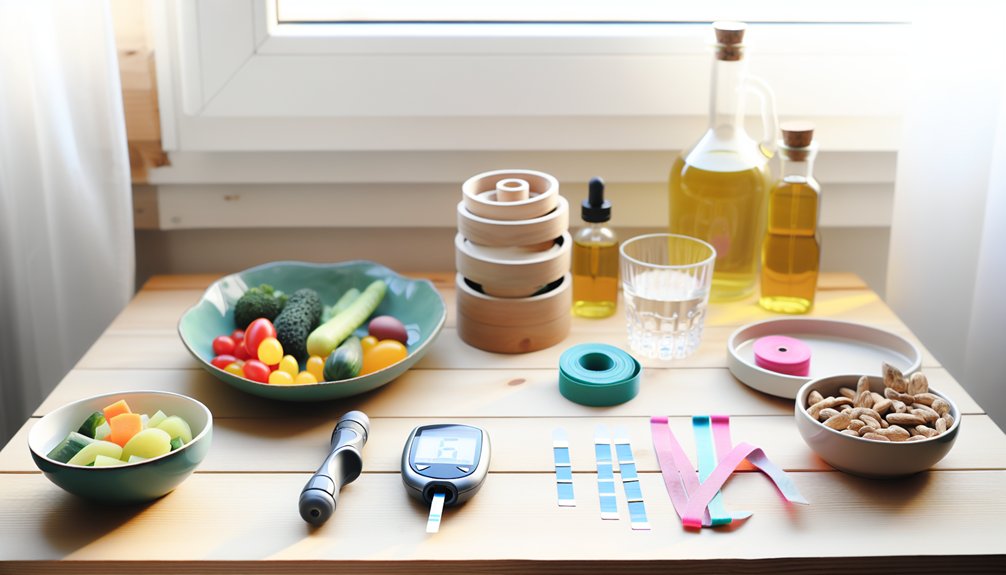Managing diabetes as a senior can feel overwhelming at times, but it doesn’t have to be. Focusing on low-risk medications, following a Mediterranean diet, and incorporating light exercise can greatly improve health and well-being. Staying connected with loved ones adds joy, while technology helps track everything from glucose levels to meals. Each small step can lead to a healthier life full of delightful moments. There are more simple strategies that can enhance this journey even further.

Steering the journey of diabetes care in senior years can feel like walking a tightrope, balancing health, medications, and the joys of daily life. For many, managing diabetes means traversing a complex web of medication and lifestyle choices. The significance of prioritizing medications with low hypoglycemia risk cannot be overstated, especially for older adults who may already face challenges.
Navigating diabetes care in senior years requires a delicate balance of health, medications, and life’s pleasures.
When the burden of treatment outweighs the benefits, it might be wise to reconsider options like insulin or sulfonylureas. Glycemic targets should be as unique as the individuals themselves, reflecting personal health, cognitive function, and life expectancy. It’s essential to avoid overtreatment in frail seniors, as the risks often overshadow potential gains. The 2025 guidelines emphasize regular check-ins to adjust goals and simplify complex regimens can help. After all, the aim is to enhance quality of life while keeping diabetes in check. Mediterranean diet patterns can provide heart-healthy benefits while supporting blood sugar control. Nutrition plays a significant role in this balancing act. Encouraging a plant-based diet tailored to seniors’ needs can be rewarding, not just for managing diabetes but also for overall well-being.
Simple changes like replacing sugar with non-nutritive sweeteners can make a difference. Staying hydrated is equally important, as water supports both metabolic health and kidney function. Additionally, integrating the 4Ms framework into diabetes care can help address person-specific issues that impact seniors’ management of their condition. Physical activity, too, is a key player in diabetes management. Even light exercise can lift spirits and improve health.
Setting realistic weight loss goals, like aiming for 3-7%, can feel more achievable and rewarding. In this digital age, technology offers promising tools for diabetes management. Continuous glucose monitoring can provide valuable insights, making it easier to maintain healthy blood sugar levels.
In the end, managing diabetes in senior years is a journey filled with ups and downs, but it is also an opportunity for growth and connection. With the right support and strategies, seniors can navigate their health with confidence, savoring the joys of life along the way.
